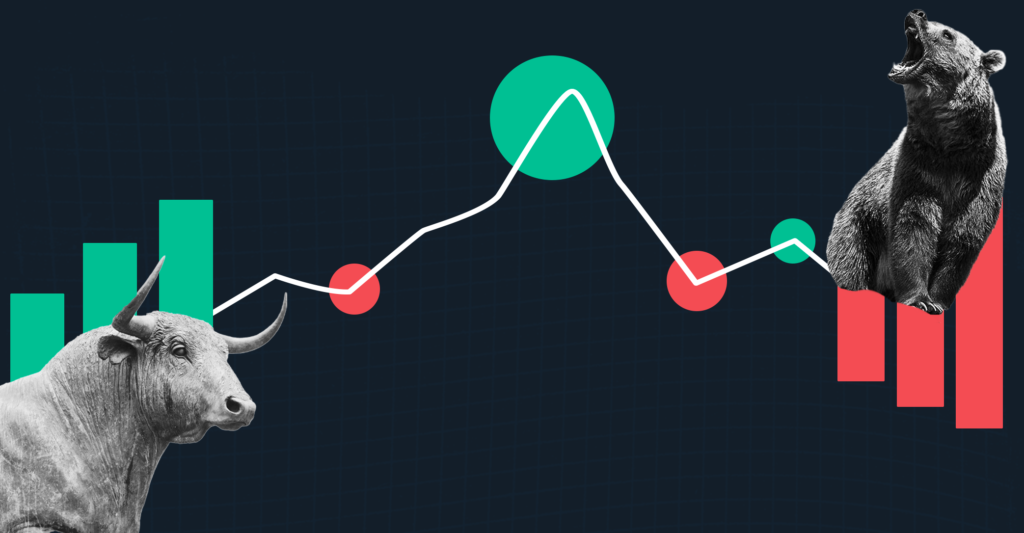Last Updated on May 24, 2022 by Aradhana Gotur
When you trade in stocks, it is important to pick the right ones so that you can enhance the return generating potential of your portfolio. To compare and pick the right stocks, analysis of the issuing company is important. Primarily, there are two types of analyses used to spot potential stocks.
- Fundamental analysis: wherein the fundamentals of the issuing company is analysed
- Technical analysis: which involves the use of statistics and charts to predict price movements based on past prices levels
In this article, let’s delve into the world of technical analysis and its workings.
Table of Contents
What is technical analysis?
Technical analysis is the process wherein the price, volume, past trends in price movements, and other statistics are used to predict how the stock would perform in the future. In other words, technical analysis studies the past performance of the stock to predict its future movements.
The technical analysis of stocks, thus, is a statistical evaluation of a stock’s expected performance using past data.
How does technical analysis work?
Technical analysis works on three major assumptions. These are as follows:
- Markets discount everything: This assumption states that the market price of the stock reflects everything about it. The market price is based on the market sentiments of the stock. It increases if there is a high demand for the stock and falls in a seller’s market. So, technical analysis uses the price movement of the stock to predict future potential.
- Prices move as per the trend: Another assumption is that the stock prices move as per the market trend. If the market is in an upswing, the prices would move up. Similarly, if a downswing trend is established, the prices would fall.
- Past patterns repeat themselves: This is the last assumption of technical analysis which believes that history repeats itself. So, the past price movements of the stock would be repeated in future too.
Considering these assumptions and using various charts and indicators, analysts determine the future performance of the stock. This is how the technical analysis of stocks works.
Benefits of technical analysis
Technical analysis is a great technique for analysing stocks and picking the right ones. Below are some benefits of the process which make it an indispensable part of stock trading.
Timing the market: The primary benefit of technical analysis is helping you find out when to invest and when to sell. By studying technical charts and graphs, you can spot potential trends in the market and then invest or redeem for the most profitable trade.
Analysis of market trends: Technical analysis charts help you check the market trend, i.e. whether it is a bullish market or a bearish one. Knowing the market trends helps you to make the right investment decisions.
A complete picture of the stock price: Technical analysis of stocks gives you four main price points of the stock – the opening price, the closing price, the day’s high, the day’s low. This helps you check the price movement of the stock, at one glance.
Fixing of stop-loss targets: Stop-loss is the point wherein you cut your losses and sell off stocks whose prices are consistently falling. Depending on your risk appetite and strategy, you can fix a suitable stop-loss target using technical indicators.
Prediction of future trends: Lastly, technical analysis helps predict a reversal in market trends and the future profitability of stocks. That is why it is used by analysts and traders to identify the right levels in stocks that have the potential to grow.
Technical analysis tools
Different types of tools are used for conducting technical analysis. These include the following:
Charts: Charts are graphical representations showing the price movement of the stock in the past. These are used together with trendlines to get a more holistic view of the price changes. There are three main types of charts that are used in technical analysis. These are as follows:
- Line charts
- Bar charts
- Japanese candlestick charts
Moving averages: It is a process in which the average price of the stock is calculated over a specified number of trading days. For example, a 5-day moving average would give you the average of the stock prices over the past five trading days. Moving averages help analysts weed out sharp price movements and establish an average price that can be compared against the moving averages of different trading periods.
Moving averages can be of the following three types:
- Simple Moving Average
- Exponential Moving Average
- Linear Weighted Average
Momentum indicators: These indicate the momentum of the stock’s price movement. Along with charts and moving averages, momentum indicators form a complete picture of the stock’s price and volume movement over the past.
Technical analysis v/s fundamental analysis
As mentioned at the start, there are two types of stock analyses that are used – technical and fundamental. Now that you have understood what is technical analysis, here’s how it compares against fundamental analysis.
| Technical analysis | Fundamental analysis |
| A statistical study of the stock price movements in the past to estimate future movements. Price and volume form the main basis of technical analysis | Involves analysing the fundamentals of the company such as the strength and efficiency of the management, the financial position, and economic trends. The stock price is not given any consideration |
| Uses statistical and mathematical calculations to ascertain future trends | Uses a subjective approach to the company’s potential to ascertain future trends |
| The past performance of the stock is considered to draw up charts and indicators | The current and future prospect of the company is considered to make an analysis |
The technical analysis of stocks can be an important tool in your arsenal to handpick the right stocks. Understand the concept of technical analysis, how it works and then read up on the various tools. Use the tools to spot potential trades. Also, try to use both technical and fundamental analyses for a more holistic approach to building up a quality portfolio.
- Best Performing Index Funds in India (2025) - Jun 5, 2025
- Issue of Shares – Meaning, Types, Examples and Steps - Jun 4, 2025
- Banking Mergers in India – List of Merged PSU Banks, Advantages, and Challenges - Jun 3, 2025





